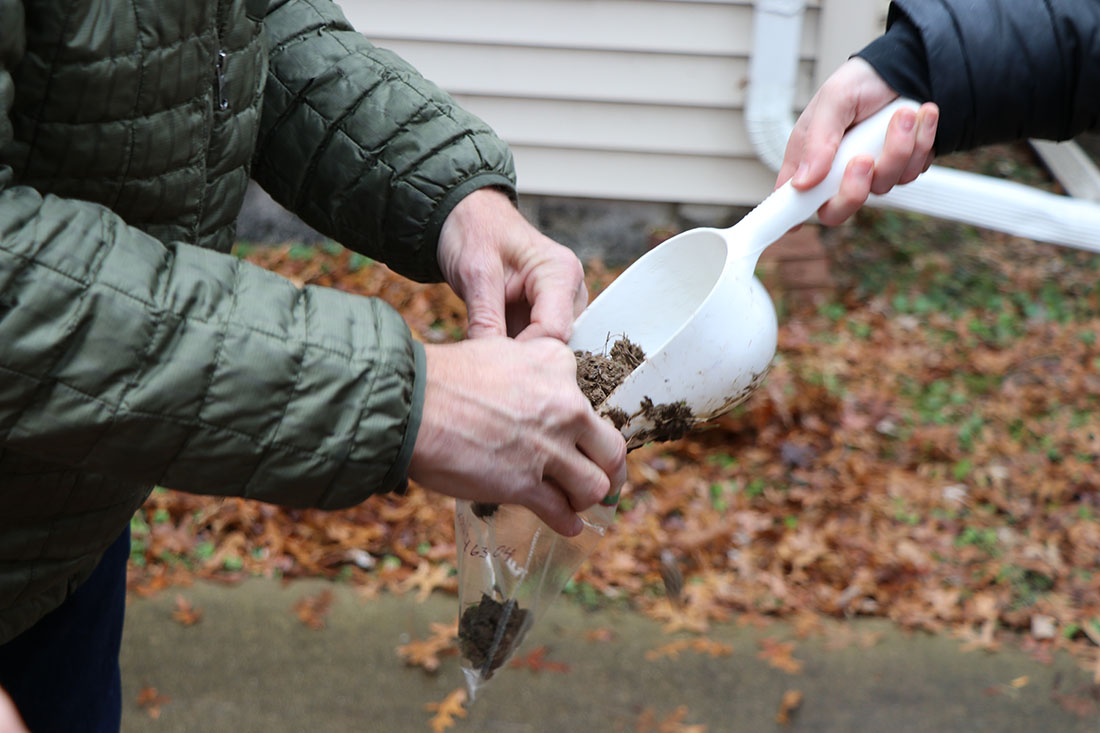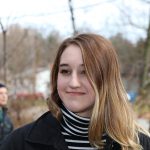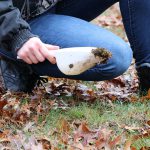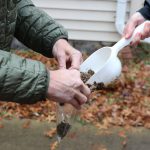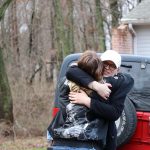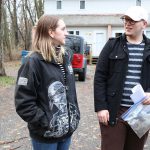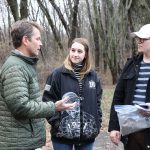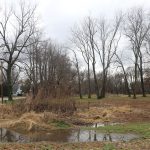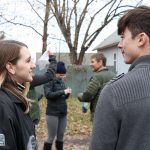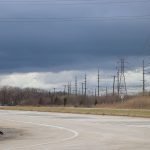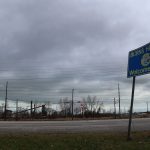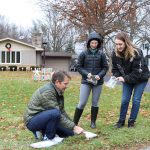By Becky Dernbach
Medill Reports
Lead and other contaminants found in the soil around long shuttered factories and current industry in Illinois and Indiana have left people wary of what might be hiding in their own neighborhoods. How can you find out? Gabriel Filippelli, a professor of earth sciences and director of the Center for Urban Health at Indiana University – Purdue University Indianapolis, can help. He trains citizen scientists — that is, everyday people who learn scientific techniques — to collect or test soil and dust samples in their own environment. People send him samples from all over the country. In one case, data collected by citizen scientists in Indianapolis that showed an area was contaminated led to a $5 million EPA cleanup of the site.
Filippelli led our soil and dust sampling expedition in Chesterton, Indiana, to help WBEZ Curious City question asker Beth Braun find out whether pollution from the steel plant in Burns Harbor might be contaminating her environment. Filippelli helped Braun determine that lead levels right next to her house were above the EPA’s recommended residential 400 ppm limit for lead in soil, which could be due to lead-based paint or pollution from the steel mill. Some of her neighbors had higher levels, and some had lower. Filippelli says more study is needed to find out whether the lead levels are related to pollution from the steel mill.
I asked him some questions about citizen science and how people can participate.
What is citizen science?
Citizen science is placing the power of scientific discovery in people’s hands. In a nutshell, it is capitalizing on people’s ability to measure or assess various aspects of the environment around them and in some way record those observations and translate that back to researchers or back among themselves.
Why is citizen science important?
It’s important for two major reasons in my opinion. One of them is that there is a wealth of potential data about the environment and environmental processes including air, water, soil, birds, season lengths that is out there but we, the scientific community, simply don’t have capacity to capture that information and translate it in meaningful ways into research discovery. So the citizens themselves act as important colleagues in the research process. The second reason is that people I think have become increasingly disconnected from their environment and increasingly unsure about what science is and what scientists do, and by utilizing citizen science I feel like not only am I helping gain more information about the world, I’m helping citizens discover that science is not that hard and that science is important and that they actually have the capability of doing it themselves.
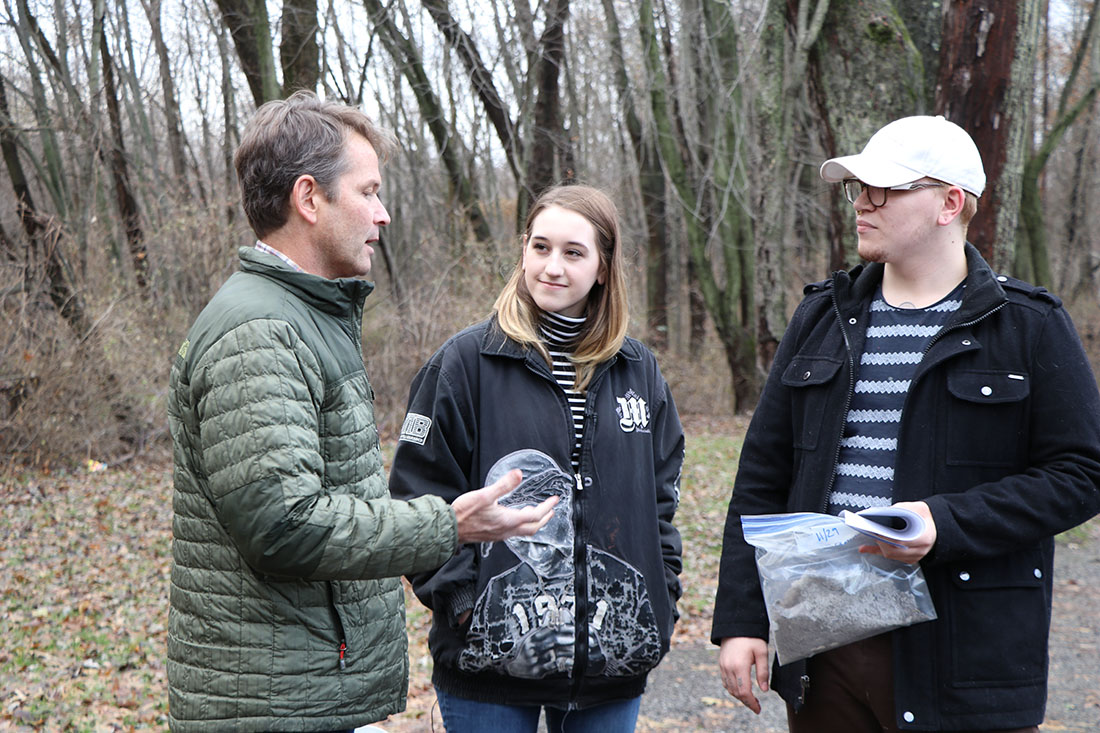
Who can participate? Who has been participating in the work you’ve been doing?
In the work that I’ve been doing, the participation has come via two different avenues of recruitment. One is almost like a direct advertising kind of thing where various news media put out information on two different aspects of my project. One is a soil science and soil health study called the Healthy Cities Initiative. The other one is an analysis of indoor dust called DustSafe North America. So those were blasted out via local and national media of various kinds, and I received a bunch of and continue to receive samples from both of those samples from people everywhere, usually obviously people who are interested. The other way I’ve been doing it is to work directly with community groups, particularly youth groups within community organizations, enfranchise them to be citizen science leaders in their own communities. In that way they actually recruit from within their communities and identify citizen scientists, engage with citizen scientists, and I work with youth leaders rather directly with the citizen scientists themselves. The youth leaders not only are they developing leadership skills but they are also embedded within these communities, physically part of their communities, so access to participants is much easier, and translation back to citizens is I think much more impactful if it’s coming from a local voice.
What’s the distinction between youth leaders and citizen scientists?
In a sense the youth are research leaders. They’re gaining more skills than a normal citizen scientist. Normal citizens send in the samples, which is a relatively passive interaction. They send them in, I analyze them and provide results back to them in hopefully a meaningful way. Whereas the youth leaders help people collect samples, train them how to collect samples, process them back at the labs, become mini-experts themselves. They are engaged actively with the research translation so they help design how information is going back to the community members themselves.
What kind of citizen science do you work on?
I do both the soil and dust work. More recently I’ve been working on air sampling in a portion of Indianapolis where we have 40 citizen scientists who are basically our air quality monitors, so we’ve placed air quality monitors at their locations and they tend to them and collect info that we’re just now starting to get back into the lab. We will also be working with them to help them understand what different aspects of air quality or air quality changes mean to their neighborhoods and their own health.

How many citizen scientists have you trained or collected samples from?
I would say that it is upwards of probably close to 2,000.
What impacts do you see of the citizen science process on research?
There’s some challenges to doing environmental research, and most of those challenges have to do with manpower and access to samples, especially in the urban setting. So what the citizen scientists are able to do or allow us to do is actually take a pretty detailed analysis of soils from around their home or dust within their home and send them in. If they didn’t, I would be knocking on basically 2,000 doors and asking for access and then going and doing a sampling myself or with our team, and so it provides access in this case and reduces [time and labor]. I don’t have to sample in people’s yards, they sample for me.
What personal impacts have you seen on the citizen scientists and their communities from participating in this?
I’ve seen a couple of very positive aspects largely from the program going on the longest, which is the soil health program. I have seen particular youth leaders gaining a very active and vocal voice, they become more vocal about environmental issues, not just on soil contamination but also they sort of use that as a way to realize they’re concerned about a lot of environmental issues. They talk about climate change and other things. It’s also kind of made a fundamental change in some communities. The samples they sent in and information they provided have inspired particularly one community to push back on the EPA. The community had supposedly been cleaned up for lead contamination about 10 years ago, but in fact the cleanup was so bad and poorly managed, there’s a ton of contamination still left in the neighborhood. They wouldn’t have known that if they hadn’t been pretty actively participating in the program, and I wouldn’t have known that because I didn’t have samples from their backyards. So they successfully lobbied the EPA, and EPA just finished a [$5 million] cleanup of the site.
Where was that?
The Martindale-Brightwood neighborhood of Indianapolis had a lead smelter plant that had been long been shuttered and badly cleaned up. It burdened an entire community with lead, largely an African-American low-income community.
That sounds like a story. What happened?
One of my graduate students had a friend who had become a high school teacher in a school that many kids from this neighborhood go to. The high school had just developed an AP course in environmental science. The teacher wanted them to have a real world environmental science experiment. So for two years in a row until that teacher left that high school, my student orchestrated a sampling campaign with kids in the class. They went out and sampled various parks, neighborhoods where they play or hang out, where they lived. When samples came back we saw how high the numbers were.
So I met with the group that I’d been working with quite a long time, the Martindale-Brightwood Environmental Justice Collaborative, and shared that data with them. It was the first dense data from that area, and it showed widespread problems above and beyond what we typically find in cities which is already higher than normal. They were alarmed. So they contacted the EPA and said, hey we’re supposedly cleaned up but we’re still contaminated. The EPA’s response was well we [the EPA] didn’t do the testing, just some other university, so we can’t touch the results. The community pushed back and said we are still contaminated and you’ve got to do something about it. So they sent a team of folks to do sampling.
About a year and a half later [the EPA] finally admitted yes, all that area was contaminated just like we found. Then the process of negotiating the cleanup went on, which took about another three years. Four years later it went from a [test] result to a cleaned-up site. That four years is too long in my opinion but better than the West Calumet area where they knew about [lead contamination] for about 40 years [note: a public housing complex built on a former lead smelter in the West Calumet area of East Chicago was forced to evacuate in 2016, displacing 1,100 residents].
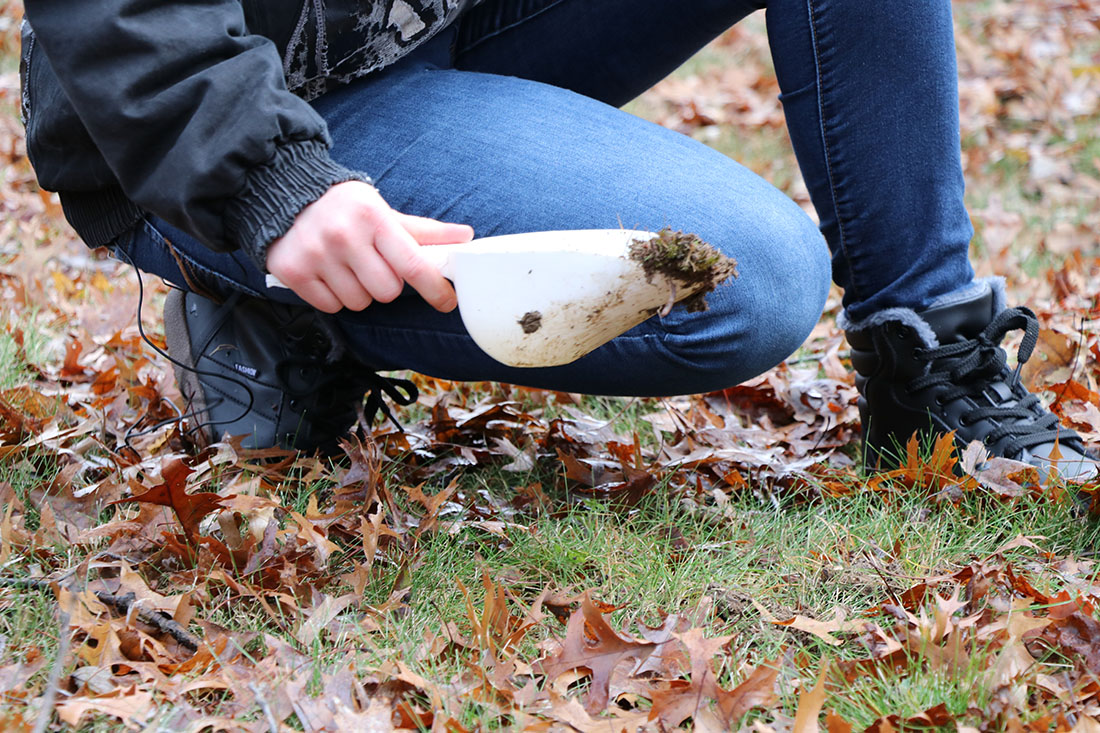
Why is it important for people to know what is in their soil and dust?
All exposure to various contaminants comes from our environment. Air, water and soil are the main sources of these potentially harmful components. And so we’ve made an effort to try to help people understand those sources by looking at soil and air, which is the dust, and we’re also working in the water area, so that they can figure out or identify whether they have particular problems or concerns that they need to fix.
What do you hope to achieve with citizen science?
I hope to break down some of the barriers between us the scientists and normal human beings so that people feel a little bit more empowered to understand their own environment. I also hope to discover aspects about basic fundamental environmental health problems or processes that I can’t do otherwise. I would argue that I need citizen scientists and I would equally argue they probably need me. They don’t know it yet but I think they do.
What do you hope to do next?
I am hoping to do two things. One is that now as we’re getting a rich dataset on interior dust on people’s homes, I’m hoping to do some of the exposure risk analysis and see how varied people’s homes are in terms of their dust compositions and analyze the drivers behind that variability. We don’t have much by way of analysis done, we just started in late July, but nevertheless we’re getting pieces of it. I hope to be able to continue building on that particularly.

How can people participate or get involved if they want to test their soil or dust?
People can go to the Center for Urban Health website and find information on how to get involved. It provides all of the links.
Does it cost anything?
Nope. Free.

